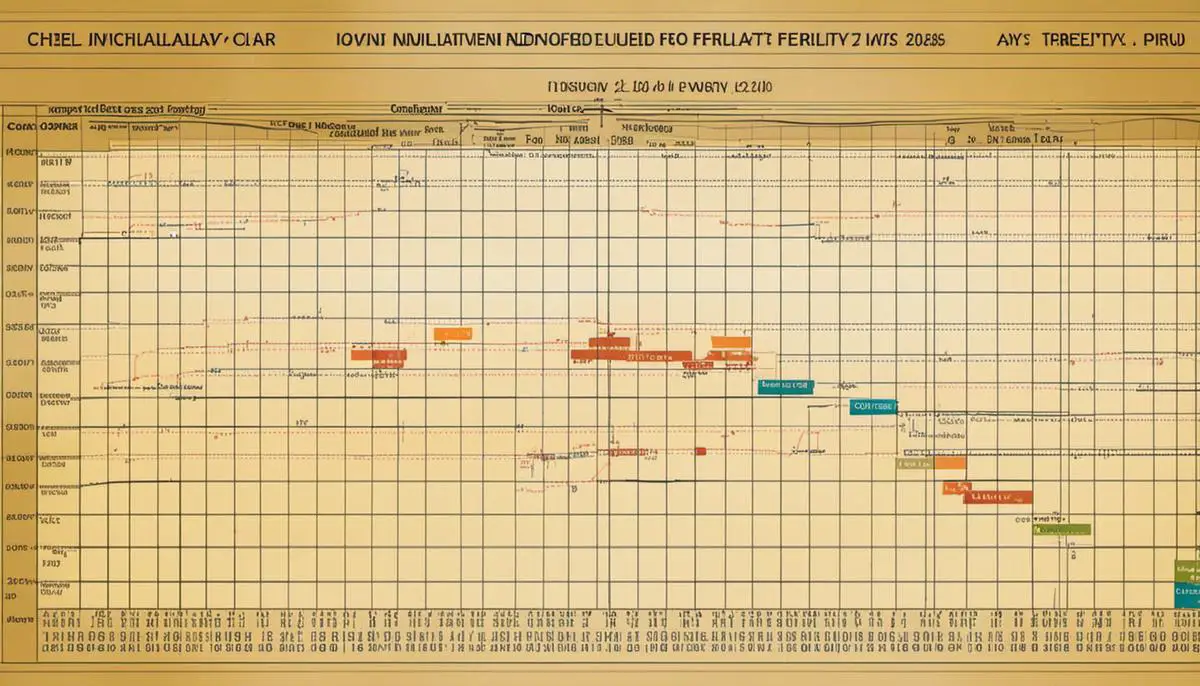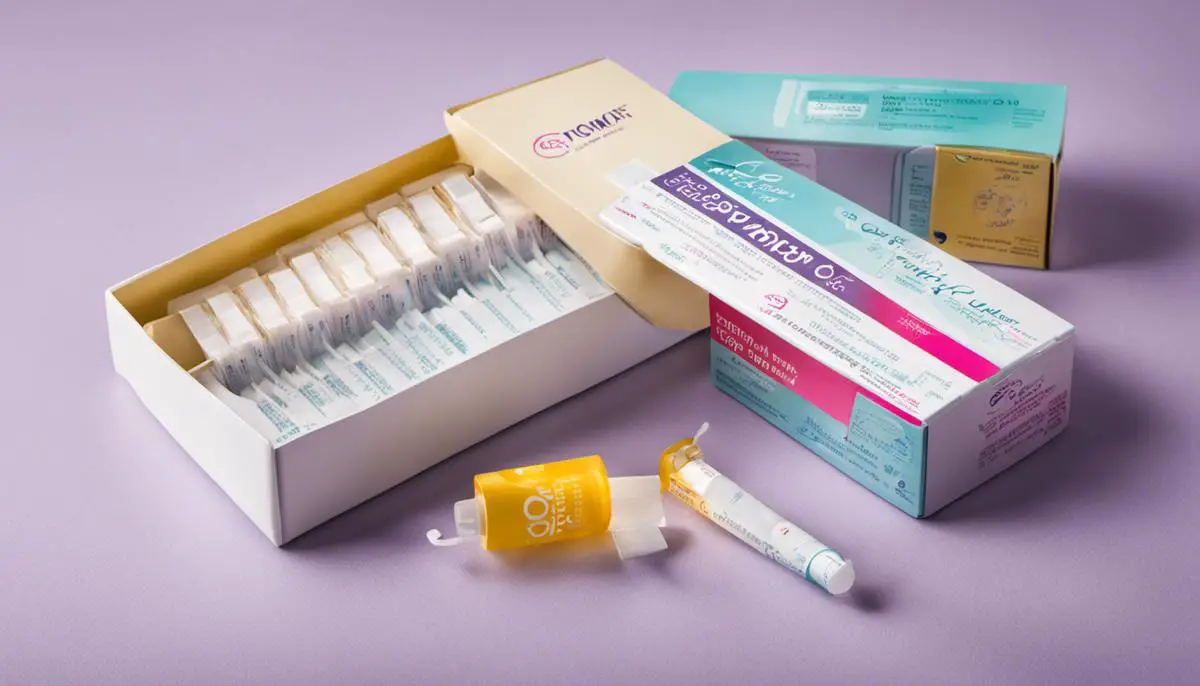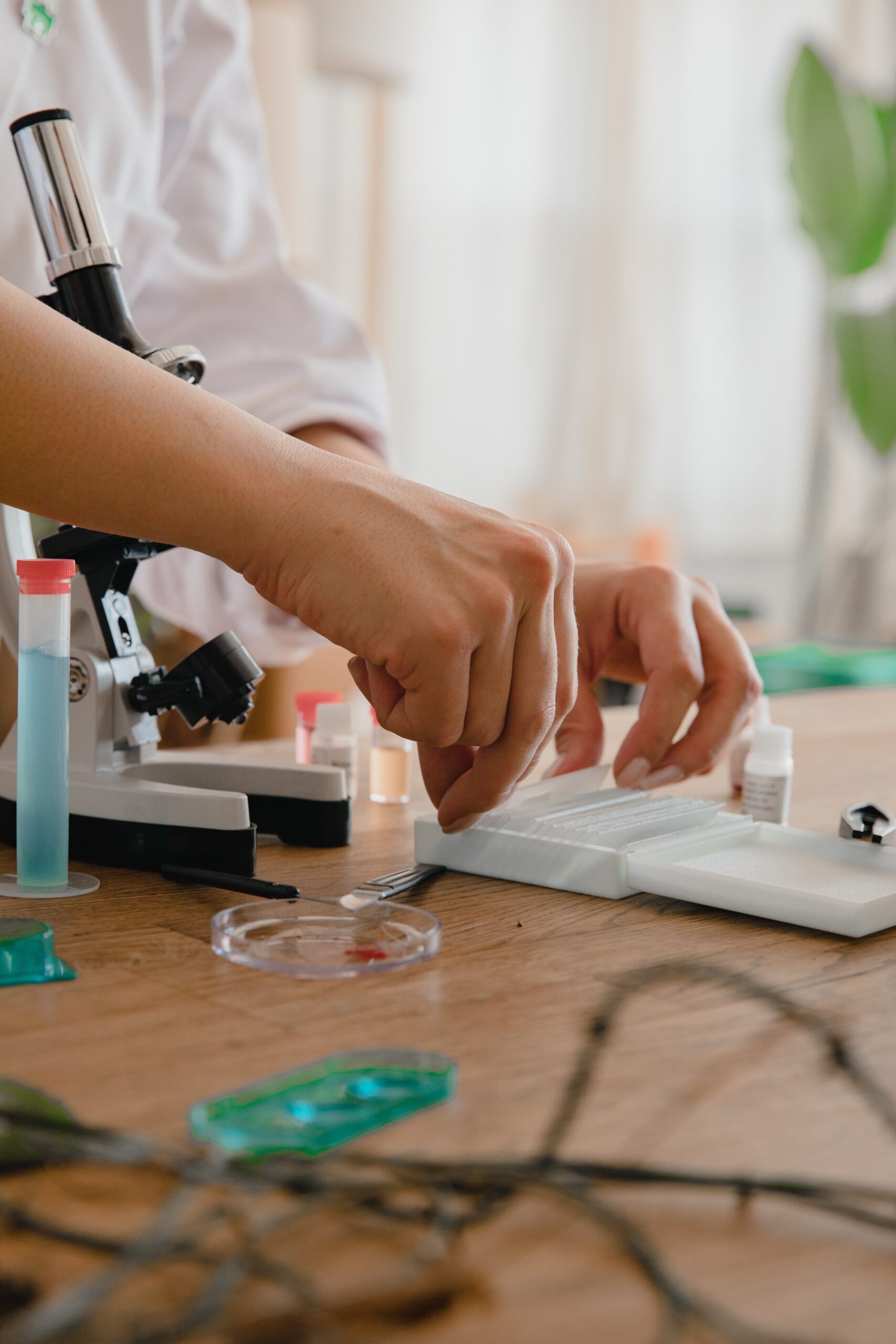Understanding one’s fertility and how ovulation works can be quite complex, yet it is crucial for those who are trying to conceive. From the intricate interplay of hormones that regulates women’s cycles, to the critical timing needed for successful conception, understanding this natural biological process is often paramount. This is where ovulation test strips come into the picture. Designed to detect an increase in luteinizing hormone (LH)— a telltale sign of impending ovulation— these strips provide a simple and accessible tool for fertility monitoring. In this work, we delve deeper into how ovulation and fertility operate, and shed light on the workings of ovulation test strips, how to properly use them, and the advantages and disadvantages that come with them.
Understanding Fertility and Ovulation
Understanding Fertility and Ovulation
When discussing fertility, it’s essential to understand the concept of ovulation. This is the process in which an ovary releases an egg ready for fertilization by sperm cells. This happens once every menstrual cycle, usually between 12 to 16 days before your period starts.
The exact timing of ovulation can vary significantly from person to person and even from cycle to cycle. Several hormones are responsible for regulating this process, including follicle-stimulating hormone (FSH), luteinizing hormone (LH), estrogen, and progesterone. The first two stimulate the growth of egg follicles in the ovaries, while estrogen thickens the womb lining to prepare for potential fertilization. Finally, progesterone is responsible for maintaining this thick womb lining throughout the second half of the cycle.
Signs of Ovulation
Understanding the signs of ovulation can help with fertility planning. Certain physical and hormonal changes occur during this time. Some women may experience mild pelvic pain or increased cervical mucus. Meanwhile, body basal temperature (BBT) slightly rises after ovulation because of the increased progesterone levels.
However, these signs are subtle and can be easily overlooked or misinterpreted. That’s where ovulation test strips come in handy.
Fertility Monitoring with Ovulation Test Strips
Ovulation test strips, also known as ovulation predictor kits (OPKs), are tools that can help identify when ovulation is likely to occur. They detect the surge in luteinizing hormone (LH), which usually precedes ovulation by 24 to 36 hours.
The strips work by reacting to the amount of LH in urine. When the test line on the strip becomes darker or the same color as the control line, it indicates a positive result suggesting that ovulation will occur in the next 24 to 36 hours. This is the ideal time for conception.
Do note that results can vary based on the individual’s hormone levels, testing methods, and the specific brand of ovulation test used. It’s also recommended to test more than once in a day, as the LH surge might not last a full 24 hours.
Importance of Monitoring the Menstrual Cycle
Monitoring one’s menstrual cycle and understanding the signs of ovulation are crucial for those trying to conceive. By identifying the most fertile days in a cycle, one can time sexual intercourse to coincide with ovulation, increasing the chances of pregnancy.
Fertility awareness also aids in early detection of potential fertility problems, allowing for timely medical intervention. Further, monitoring with ovulation test strips can help in planning for assisted reproductive procedures such as intrauterine insemination (IUI), where timing is critical.
Summary
To summarize, fertility and ovulation, and the critical role hormones play in them, form the crux of conception-related discussions. Ovulation test strips serve as a reliable means of identifying the precise timing of ovulation, thereby aiding in planning for conception and identifying potential fertility issues early on. By leveraging appropriate tools and accurate tracking, individuals and couples can gain a thorough understanding of their fertility, thus enhancing their chances of successful conception.

How Ovulation Test Strips Work
Deciphering Ovulation Test Strips
Often referred to as ovulation predictor kits (OPKs), ovulation test strips are a type of at-home fertility tests designed to determine the peak fertility period in a woman’s menstrual cycle. How do these strips work? They detect the presence of a particular hormone in a woman’s urine, known as luteinizing hormone (LH). When LH levels escalate, indicating that ovulation is imminent, these strips employ antibodies that react with LH, resulting in the formation of a visible line on the strip.
How Ovulation Test Strips Work
The principle behind ovulation test strips is based on the surge of LH preceding ovulation. The pituitary gland in the brain releases LH in large amounts approximately 12 to 36 hours before ovulation. This sudden increase, often referred to as the “LH surge,” triggers the release of a mature egg from the ovary. The ovulation test strip is designed to detect this increase in LH concentration in urine.
To use an ovulation test strip, a woman will generally urinate on the test strip or dip the strip into a small container of urine. A mark, line or color change on the strip will indicate the presence of LH. The line’s intensity usually correlates with the concentration of LH: the darker the line, the higher the hormone concentration.
The Science Behind Ovulation Test Strips
Ovulation test strips capitalize on the biological principle that LH levels surge right before ovulation. This surge can be slight or significant, depending on the woman, but it’s always a noticeable increase. The test strips contain antibodies designed specifically to recognize and bind to LH. When LH in the urine contacts these antibodies, a reaction occurs, causing a visible marker to appear on the test strip. This results in a positive test result.
The Effectiveness of Ovulation Test Strips
The effectiveness of ovulation test strips in identifying the fertile window varies depending on several factors, including the woman’s menstrual cycle regularity and the consistency in test use. However, when used correctly, they can be around 99% accurate in detecting the LH surge. It’s crucial to remember that a positive result on an ovulation test strip doesn’t guarantee pregnancy. It simply signifies that ovulation is likely about to occur, offering the best time for conception.
The Significance of Ovulation Test Strips in Fertility Monitoring
Ovulation test strips serve as an essential instrument in fertility monitoring, providing couples and individuals a simple, cost-effective method for keeping track of ovulation. Understanding the cycle of ovulation plays a crucial role in enhancing the chances of conception and can help shed light on potential fertility concerns. Although ovulation test strips may not answer all fertility-related questions, they undoubtedly aid in understanding a woman’s reproductive cycle, paving the way for more effective fertility planning.

Usage and Interpretation of Ovulation Test Strips
Navigating Through the Use of Ovulation Test Strips
Often referred to as ovulation predictor kits (OPKs), ovulation test strips function to increase chances of successful conception. They operate on the principle of detecting the surge of Luteinizing Hormone (LH) in a woman’s body. This hormone is primarily responsible for triggering ovulation – the process where an egg cell is released from the ovary. This usually happens within a 24 to 48-hour window following the noted LH surge.
Right Usage of Ovulation Test Strips
To use ovulation test strips, you should first determine when to start testing. This typically depends on your menstrual cycle’s length, which is counted from the first day of your period, to the day before your next. For a 28-day cycle, testing usually starts on day 11. If your cycle is longer or shorter, the start day may vary.
When ready to test, urinate on an ovulation test strip or dip it into a collected urine sample for a few seconds. Wait for the time specified by the manufacturer, typically five to ten minutes, to read the result.
Common Misconceptions and Errors
One common misconception about ovulation test strips is that they confirm ovulation. However, these strips only predict a surge in LH hormone, which usually leads to ovulation but doesn’t guarantee it. A positive result indicates an LH surge, suggesting that ovulation may occur in the next 24-48 hours.
Another common mistake is using ovulation test strips as pregnancy tests. Pregnancy tests detect a different hormone, human chorionic gonadotropin (hCG), not LH.
Interpreting the Results of Ovulation Test Strips
Interpreting an ovulation test strip requires attention to the control and test lines’ color intensity. If the test line is as dark or darker than the control line, this indicates a positive result, signaling an LH surge. A lighter test line or no test line suggests a negative result.
It’s important to understand that a faint test line does not indicate a faint LH surge— this is another common misconception. Ovulation test strips are not quantitative; rather, they are qualitative, meaning that the intensity of the color in the test line doesn’t necessarily correlate with the amount of LH in the body.
Increasing Conception Possibilities
One effective way to boost your chances of conceiving is to engage in sexual activity within a 24-48 hour window following a positive ovulation test result, as this is when ovulation is most likely to occur. Monitoring your ovulation over several cycles can allow you to establish a timeline for when this occurs, thus improving the odds of conceiving successfully. Although this method can be helpful, it’s crucial to remember that results can differ, and seeking personalized advice from a medical professional is recommended.

Pros and Cons of Using Ovulation Test Strips
Getting to Know Ovulation Test Strips
Ovulation test strips, or ovulation predictor kits (OPKs), serve as practical devices for those wanting to track their fertile periods. These straightforward home tests operate by detecting a surge in the luteinizing hormone (LH) present in urine, a process that usually takes place 24 to 48 hours before ovulation. Pinpointing this LH surge provides women with a more precise idea of when they’re most fertile, hence most likely to conceive.
Pros of Using Ovulation Test Strips
There are several advantages to using ovulation test strips in fertility monitoring.
Accuracy
Ovulation test strips are generally very accurate. When used correctly, they are approximately 99% effective in detecting the LH surge that signals imminent ovulation, making them a highly reliable method for predicting fertility.
Availability
Ovulation test strips are over-the-counter products, so they are widely available for purchase in drugstores and online. This accessibility means that any woman who wants to monitor her fertility can easily get the tools she needs.
Affordability
The cost of ovulation test strips is relatively low compared to other fertility monitoring methods. Despite the need to buy multiple strips to test over several days, the overall cost is still affordable for most.
Easy to Use
Ovulation test strips are easy to use, which is another significant advantage. Simply dip the strip in a urine sample and then wait for the results, which typically appear within five minutes.
Cons of Using Ovulation Test Strips
Despite these advantages, there are also drawbacks to using ovulation test strips.
Potential for Misinterpretation
The primary limitation of ovulation test strips is the potential for misinterpretation. The results of these tests are not always clear-cut, and you need to understand the color gradations on the strip to interpret the results correctly.
Limitations for Those with Irregular Cycles
Another issue is that ovulation test strips may not work as well for women with irregular menstrual cycles. LH surge timings can vary greatly in these cases, leading to potential inaccuracies.
Daily Testing
Ovulation strips require daily testing, which some people may find inconvenient and stressful. It can be especially burdensome for those with busy schedules or heightened anxiety about conceiving.
Negative Emotional Impact
Lastly, using ovulation test strips can sometimes cause or exacerbate emotional stress, particularly for women who have been trying to conceive for a long time without success. The daily reminder of fertility challenges can be distressing for some individuals.
In summary
Ovulation test strips are a convenient and affordable option for fertility tracking. They can be incredibly accurate but are not without potential limitations. Understanding the potential challenges can help individuals make more informed decisions about their fertility management methods and help them on their journey to parenthood.

Knowledge is power, and when it comes to fertility, it can also be the key that unlocks the path to parenthood. Ovulation test strips have shown themselves to be a useful tool in fertility monitoring, effectively revealing the optimal period for conception by detecting the LH surge. Despite certain limitations, their affordability, accessibility, and proven efficacy make them a popular choice among those aspiring to conceive. Above all, understanding one’s own fertility cycle and how these strips can be used most effectively underscores the importance of education in this sphere. This exploration into fertility and the use of ovulation test strips is indicative of a broader conversation pertaining to reproductive health that warrants ongoing discussion.
FAQ
Do ovulation test strips work?
For women who have regular menstrual cycles in particular, ovulation test strips can be helpful tools for anticipating ovulation and increasing the likelihood of conception. On the other hand, people with irregular cycles or underlying fertility problems might find them less dependable. It’s critical to use them appropriately and, if necessary, in conjunction with other fertility-tracking techniques. Should you experience ongoing infertility, consult a physician or a fertility specialist for advice.
How long after a positive ovulation test are you fertile?
The following is a summary of what occurs following a positive ovulation test:
- Positive Ovulation Test: 24-36 hours prior to ovulation, there is a spike in luteinizing hormone (LH), which is indicated by a positive ovulation test. The last phases of egg maturation and the release of the mature egg from the ovary are initiated by this surge in LH.
- Egg Release (Ovulation): 24 to 36 hours after a positive ovulation test, ovulation usually takes place. In this period, the developed egg leaves the ovary and travels through the fallopian tube, where it may be fertilized by sperm.
- Fertility Window: The 24 to 36 hours that follow a positive ovulation test are considered your peak fertility window. If you have unprotected sexual relations, this is when you are most likely to become pregnant.
It is noteworthy that, in ideal circumstances, sperm can endure up to five days within the female reproductive system. Therefore, if viable sperm are present when the egg is released, fertilization is still possible even if you have sex a day or two prior to ovulation. This is why, in order to increase your chances of conceiving, a lot of experts advise having sex in the days before, during, and for a few days following the LH surge.
Remember that each person’s fertility is unique and can be impacted by a variety of factors, including the regularity of your menstrual cycle, the precision of the timing of your ovulation test, and other health issues. It is advisable to speak with a healthcare professional or a fertility specialist if you are actively trying to conceive and have concerns about your timing or fertility. They can offer you individualized advice based on your unique circumstances.
When should I use ovulation test strips?
Start testing a few days before you anticipate to ovulate, which is typically around the middle of your menstrual cycle, in order to use ovulation test strips effectively. Start testing on day 10 or 11 of a 28-day cycle, for instance. Every day, at the same time—usually in the late afternoon or early evening—take the test. Test again until you get a positive result, meaning that you are probably going to ovulate in the next 24 to 36 hours. This is your window of fertility, when you should think about getting sexually active if you’re trying to become pregnant.
How often should you take an ovulation test?
An ovulation test should be performed once a day, usually in the late morning or early afternoon, to maximize the chance of identifying the surge in luteinizing hormone (LH) that precedes ovulation. A typical strategy is to begin testing a few days before you anticipate ovulation, which is typically in the middle of your menstrual cycle, and to keep testing every day until you get a positive result. To increase your chances of catching the LH surge, you might think about testing twice a day—once in the late morning and once in the early evening—if you have irregular menstrual cycles or are unsure of when you might ovulate. The best source of information on when and how often to test is the instructions that come with your particular ovulation test kit.
